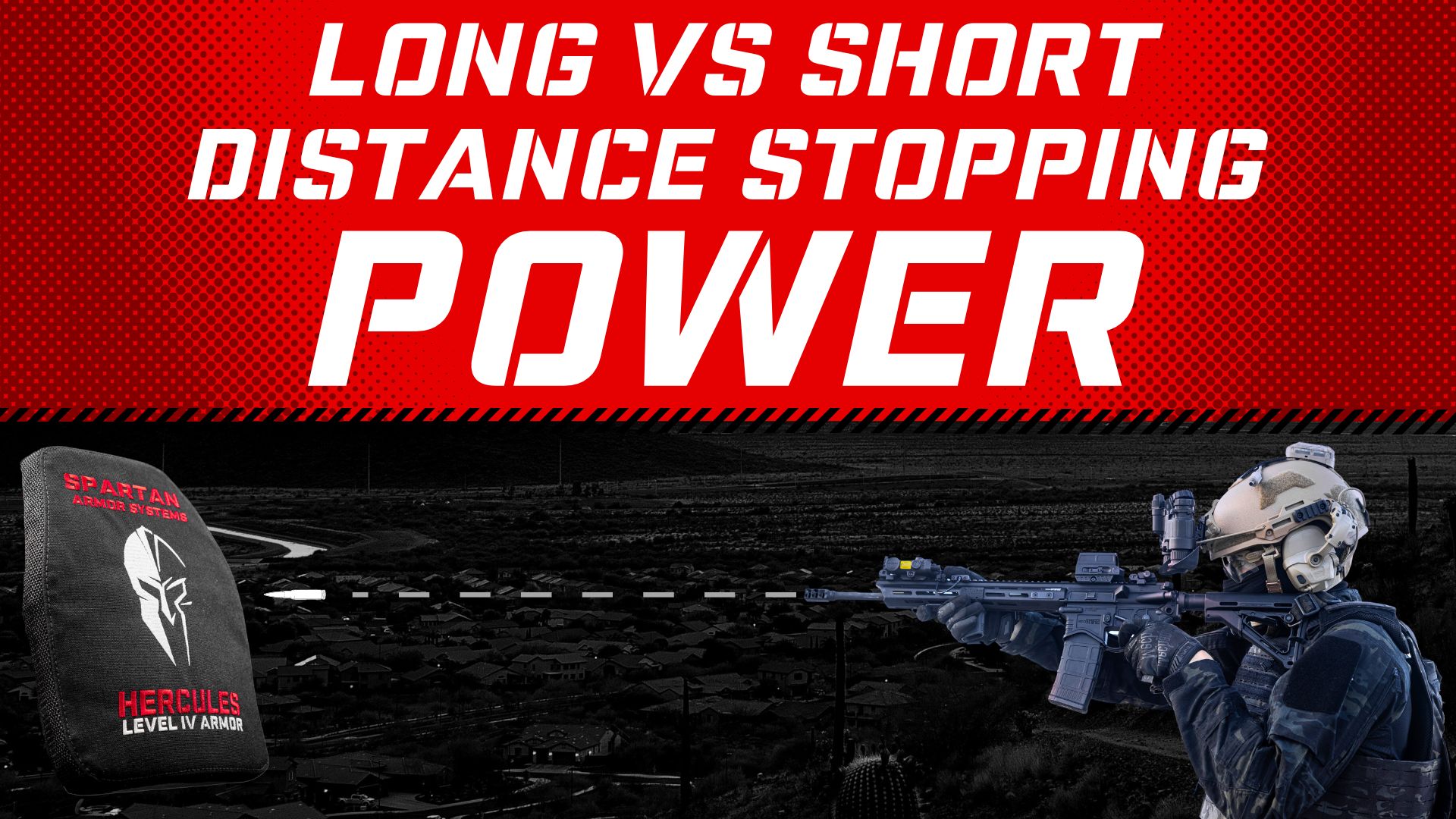Understanding Bullet Speed: How Distance Affects Armor
By: Rob Orgel, Emergency Response Tactical
At Spartan Armor Systems, we pride ourselves on our commitment to quality, expertise, and education. We believe in empowering our customers with knowledge, and in this article, we delve into the complex world of ballistics. We'll explore how distance affects bullet speed, penetration, and stopping power, and how this knowledge can help you better understand the effectiveness of body armor.
How Does Distance Affect Bullet Speed?
Ballistics is the science of projectiles and firearms, and it plays a crucial role in understanding how body armor works. The National Institute of Justice (NIJ) sets the standard for ballistic protection ratings, with all rifle testing taking place at approximately 50 feet. But what happens when we step outside of these parameters?
How Does Bullet Speed Impact Armor Penetration?
Rifle bullets, such as those from an AR-15, typically exit the barrel at speeds ranging from 2700 to 3200 feet per second (ft./s), depending on the barrel length and type of ammunition. As the bullet travels, it loses speed due to drag, which is rated as a ballistic coefficient (B.C.). This coefficient is a measure of how effectively the bullet retains its speed while moving through the air.
Unlike a car, which slows at a consistent rate when you take your foot off the gas, bullets slow down at a compounding rate. This means they lose speed slowly at first, then more rapidly as they continue to travel. This phenomenon has significant implications for body armor, which we'll explore in the next section.
How Does Bullet Velocity Affect Its Ability to Penetrate Armor?
Penetration is largely dictated by speed. At 50 feet, rifle bullets have reached their maximum potential speed and have fully stabilized. If they can't penetrate body armor at this distance, it's unlikely they'll be able to do so under almost any other circumstances.
As the distance increases, the bullet's speed decreases, meaning that body armor can often stop more than anticipated. For instance, a special-purpose rifle, such as a Bravo Company Manufacturing Mark 12, fires 77-grain match bullets at a muzzle velocity of 3039FPS. At 300 yards, the bullet's speed drops to 2245FPS, and at 750 yards, it falls to 1328FPS. This reduction in speed and energy makes it unlikely to penetrate body armor.
How Does Bullet Speed Impact Armor Penetration?
As we delve deeper into the realm of ballistics, it's crucial to understand how distance affects bullet velocity and, consequently, its ability to penetrate body armor.
Bullet velocity is a critical factor in determining the penetration power of a bullet. The faster a bullet travels, the more likely it is to penetrate body armor. However, as a bullet travels further, its velocity decreases due to air resistance or drag. This phenomenon is known as bullet deceleration.
To illustrate this, let's consider a typical bullet with a muzzle velocity of 340 meters per second (m/s), which is the speed of a rimfire .22LR cartridge bullet as it leaves the barrel. As the bullet travels, its speed decreases. This decrease in speed is not linear but exponential, meaning the bullet slows down more rapidly as it travels further.
The following graph visualizes this concept, showing how bullet velocity decreases with distance:

How Does Increased Distance Affect Bullet Speed and Armor Penetration?
What does this mean for body armor? Simply put, the further a bullet has to travel, the less likely it is to penetrate body armor. This is because the bullet's velocity, a key factor in its penetrating power, decreases with distance.
At close range, a bullet fired from a rifle can be traveling at its maximum velocity, presenting the greatest threat to body armor. However, at longer ranges, the bullet's velocity decreases significantly, reducing its ability to penetrate armor.
This is why body armor is tested at a standard distance of 50 feet according to the National Institute of Justice (NIJ) standards. At this distance, the bullet is traveling at near its maximum velocity, providing a rigorous test for the armor.
How to Choose the Right Body Armor?
Understanding these ballistic principles can help you make an informed decision when choosing body armor. At Spartan Armor Systems, we offer a range of body armor options, from soft armor suitable for protection against handgun rounds to hard armor capable of stopping rifle rounds.
Our Level III+ body armor is designed to withstand rifle rounds, providing protection even at close range. For those in need of maximum protection, our Level IV body armor can stop armor-piercing rifle rounds.
Remember, the best body armor is the one that suits your specific needs and threat environment. If you need assistance choosing the right body armor, don't hesitate to contact us. Our team of experts is always ready to help.
What Factors Should You Consider When Choosing Body Armor?
While the NIJ standard accounts for the bullet's maximum potential, it doesn't consider other factors that can affect a bullet's ability to penetrate. For instance, the age and storage condition of the body armor can significantly impact its effectiveness. Body armor, especially ceramic types, typically have a lifespan of about five years, while steel body armor can last up to 20 years.
It's crucial to know your body armor's expiration date and to replace it as needed. After all, replacing body armor is far less invasive than replacing organs.
Conclusion: Why is Understanding Ballistics Important for Body Armor Users?
In conclusion, distance plays a significant role in the effectiveness of body armor. As a bullet travels further, its velocity decreases, reducing its ability to penetrate armor. Understanding this principle can help you make informed decisions when choosing body armor and planning for potential threat scenarios. At Spartan Armor Systems, we are committed to providing high-quality, American-made body armor that you can trust.
Remember, your safety is our priority. Choose Spartan Armor Systems for body armor that offers superior protection, fast shipping, and expert advice.
About the Author:
Rob joined the USMC in 2004 with a military occupational specialty of 0311 (Infantry Rifleman). Assigned to 3rd Bn 1st Marines, Rob participated in a deployment to Iraq (OIF-3) as a point man followed by an assignment as Team Leader for the 13th MEU Special Operations Capable to Iraq (OIF-6). In 2007, he joined 1st Marine Regiment and reenlisted to deploy to Afghanistan. InJanuary 2010, Rob was promoted to the rank of Sergeant & continued to serve 1st Marine Regiment for a year-long deployment in Afghanistan. On return from Afghanistan, Rob was assigned to School Of Infantry West to work as a Combat Instructor (CI) for the USMC where he trained thousands of Marines to gain the skills necessary to survive. Rob exited the USMC in 2014 & was immediately picked up by Securing our Country (SOC). As a private military contractor, Rob was responsible for training the specialty teams of operators at the American Embassy in Iraq. Shortly after leaving Contract in 2018, Rob became the Chief Instructor of GPS Defense Sniper School. Rob now gives 100% of his attention to Emergency Response Tactical training all levels over 320 days a year as his passion & full-time job.
You can read his full bio here.



